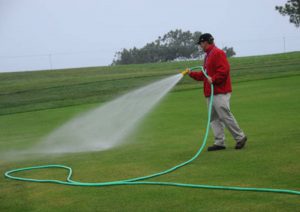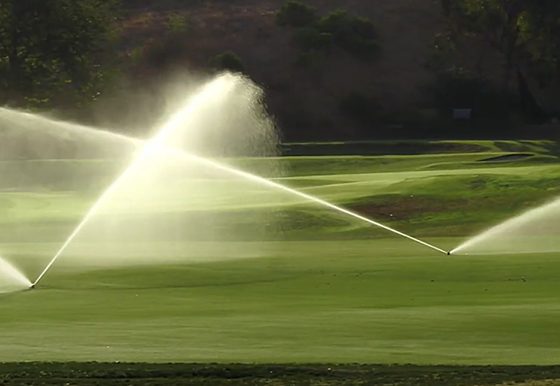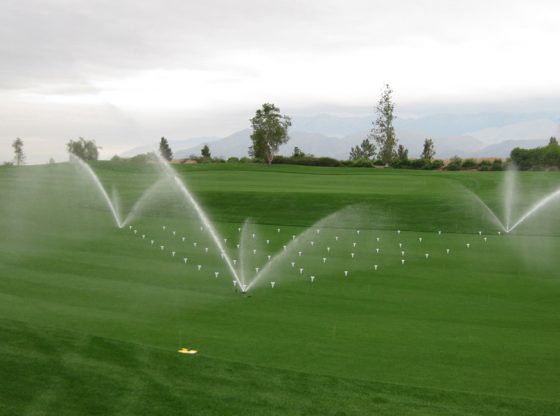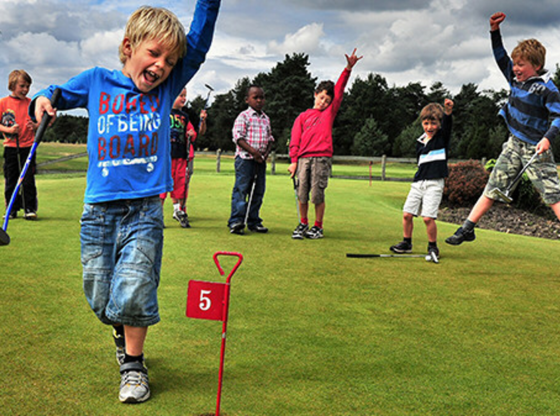What determines a good golf course? Often times the quality of a course is determined by the landscape. Although maintaining this quality is difficult, as it requires an abundance of water. During the warm months, plants dry out easily and don’t hold water well. This fact, makes irrigation techniques pertinent.
Watering schedules are determined based on weather, terrain and usage. In hilly areas, watering is more difficult. Due to the occupied times of a course, available watering times are limited. Evening hours sometimes serve as watering times regardless of the best absorption times of the soil. Not all courses are shaped uniformly, causing irrigation difficulties. Different types of grass also create differing watering needs.
Proper Irrigation
Depending on climate factors, turf on average requires 25 to 60 inches of water annually. Most of this water is released during the summer months, when rainfall is lowest. Although trees and shrubs can store water, turf grasses can not. Turf has very little capacity to store water and withstand periods of drought.
 During the summer months turf needs watered about twice a week. It is important to closely monitor the turf and any weather inconsistencies to adjust irrigation appropriately. Any deficit in rainfall must be supplemented with irrigation. To maintain healthy vegetation, a typical course requires 100,000 to 1,000,000 gallons of water per week during the summer.
During the summer months turf needs watered about twice a week. It is important to closely monitor the turf and any weather inconsistencies to adjust irrigation appropriately. Any deficit in rainfall must be supplemented with irrigation. To maintain healthy vegetation, a typical course requires 100,000 to 1,000,000 gallons of water per week during the summer.
Irrigation can be a difficult thing to manage. There are systems put in place to make irrigation more efficient and effective. Trained golf course irrigation specialists can determine the best systems for your irrigation needs. Automatic systems that adapt to weather can make irrigation management easier. Systems can also be installed to manage hundreds of light and irrigation systems from one device.
Water Waste
According to the Alliance for Water Efficiency, water audits performed across the country suggest that many golf courses use 20% to 50% more irrigation water than necessary. Reducing this overuse can save many golf courses not only 50,000 to 500,000 gallons per year but also save them money.
 Reclaimed water usage is a way to reuse and save water costs. Wastewater treatment plants provide reclaimed water as a supplement to potable water use. Reclaimed water is wastewater treated to drinking standards but not deemed potable water. Golf courses are an opportunity to utilize that water.
Reclaimed water usage is a way to reuse and save water costs. Wastewater treatment plants provide reclaimed water as a supplement to potable water use. Reclaimed water is wastewater treated to drinking standards but not deemed potable water. Golf courses are an opportunity to utilize that water.
Although some areas such as the green still require potable water, switching can cut costs. Also, reclaimed water has many other uses on a course such as for supplying toilets, urinals and some cooling towers.
Even though this is a good alternative, there are some drawbacks. Reclaimed water requires a clear separation of pipes from potable water. The irrigation systems are usually also on separate meters. Extensive plumbing systems will need to be installed in areas connected to both reclaimed and potable water. An example would be the water supply for toilets, urinals and water fountains. Although these new installations are tedious, it is reported to add less than 15% to the total cost of the plumbing system.
Proper Drainage
Irrigation in important but a quality course will also have a solid draining system. Drainage is considered the most important element of a quality putting green. Failure of turf and grass typically are due to one or more factors related to the inability to get rid of moisture.
Poor drainage creates softer conditions on putting greens. This causes ball marks, foot prints, and wear on the turf and grass. Diseases in poorly drained areas can also develop. Make sure your irrigation system is set on a regular and modest watering cycle. Having the proper drainage in place will also avoid repair costs later when over watering occurs.
The Decision
Developing the right watering plan for your course is not easy. There are many factors that come into play and cost is always a matter. Whether you want to save water, save money, be more environmentally friendly, or just want to improve your course; irrigating is always the way to go.













I didn’t realize that draining is the most important part of putting green functioning. I have been thinking about working on a golf course in the future. I can see how it would be important to make sure the putting green can drain because it would change people’s game.